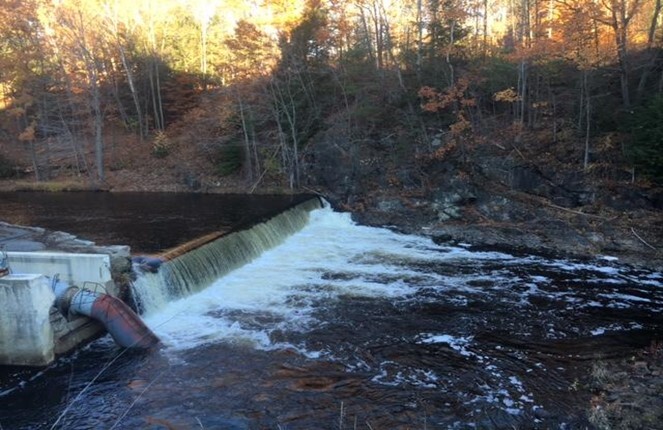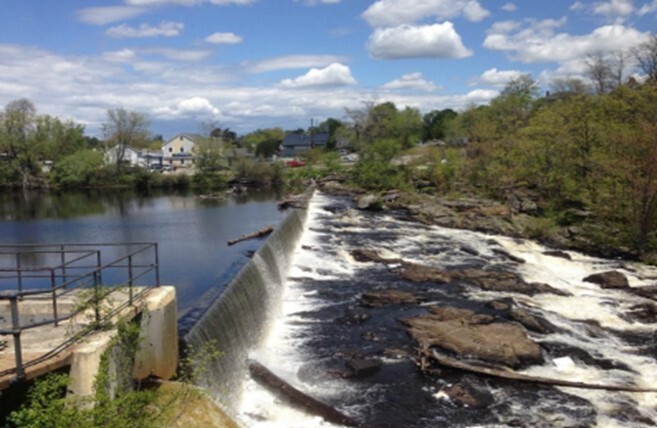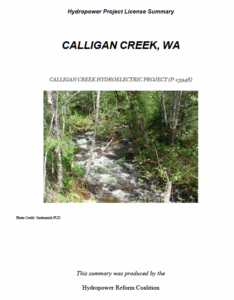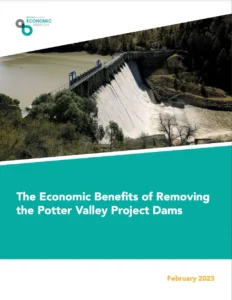Cleaning up after yourself

Dam on the Salmon River Falls | Photo courtesy of Wiki Images
We all make a mess sometimes. Maybe it’s filling up the sink with dishes and leaving cups and glasses scattered around the apartment after that party. Or the school project where your kid scrambled to make that baking soda and vinegar volcano for a science class the morning it was due.
Or left a deadbeat dam sitting in a river after say 100 years of generating electricity?
I’m sure you remember being told by an adult that you made that mess, so you get to clean it up, right? Or maybe you had that roommate who never did the dishes or left their dirty clothes in a pile?
Being a good roommate or a responsible member of a family means that cleaning up isn’t optional and that in order for everyone to enjoy the place that we live or work there are basic responsibilities. These good habits and responsibilities should apply to everyone.
Well, not so much.
Unfortunately, hydropower dam owners are kinda like that roommate who just never seems to do the dishes, no matter how high the pile of greasy, caked-on plates and pans are staring them in the face.
Most hydropower dams in the United States are regulated by the federal government (the responsible agency is the Federal Energy Regulatory Agency, FERC). In exchange for this federal license to generate electricity and make money, the dam owners are allowed to use the public’s water. Part of the deal is that dam owners have to provide benefits to the public and minimize the harm to rivers by how they operate the dam (more on that in another post).
When hydroelectric dams (usually the older and smaller ones that are in rivers all over the country, including many in the northeast) are no longer profitable the owner can request to surrender their federal license and get out of the bargain they set with the public.
Maybe you are already ahead of me here, and are thinking, “Yes! This is where they are told to clean up their mess and take down the dam!”
Well, not so much.
Federal license surrender only requires that the dam owner decommission the facility. That means that they need to unplug from the power grid, remove or disable the generating equipment and allow the river to freely pass through the structure. The federal government will not require removal of the entire dam. If a dam owner volunteers to take down the dam, that’s good enough by the federal government.
So its kinda like they only have to do some of those dirty dishes in the sink and leave the rest if they feel like it. And if the rest of those proverbial dishes are going to get cleaned or that dam actually taken down, it’s up to the proverbial roommate. That’s us, the general public.
I don’t know about you but to me, that’s unfair and really frustrating. At American Rivers, our goal is to work together across the country to remove 30,000 dams by 2050. That’s a big pile of dirty dishes! To meet this goal we need everyone to do their part.
A great example of how dam owners are being let off the hook (among the many unfortunately) is playing out on the Salmon Falls River, which runs along the border of Maine and New Hampshire. The owner of the Somersworth Hydropower Project (FERC license P-3820) Aclara Meters, LLC has asked to surrender their license for this small (2.1 megawatt, which is a very small facility) generating facility. FERC has agreed to the surrender but has denied requests by the states of Maine and New Hampshire as well as river advocates to require not just the decommissioning but the complete removal of the two structures that comprise this facility.
FERC argues that removal is entirely voluntary and that they only have authority to decommission provided that the remaining structure meets dam safety requirements, their understanding of environmental considerations, and the public interest is met by leaving the dam in place.
In case after case the federal government has ruled that leaving an unplugged dam in place meets those criteria. We and many others disagree. Leaving a dam in the river creates unsafe conditions for recreation, prevents safe, timely, and effective fish passage, and often leaves an eyesore and maintenance challenge for future generations.
Big shout out to one of our partners, American Whitewater for continuing to fight these shortsighted rulings.
Want to read more about American Whitewater’s case arguing for removal? Here’s their briefs.
Want to see what Aclara’s parent company says about their environmental stewardship and social responsibility?
This post originally appeared at americanrivers.org.




